
























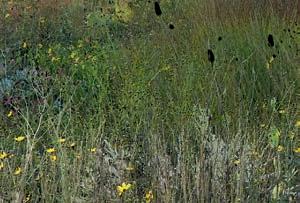



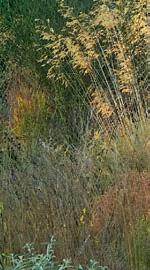










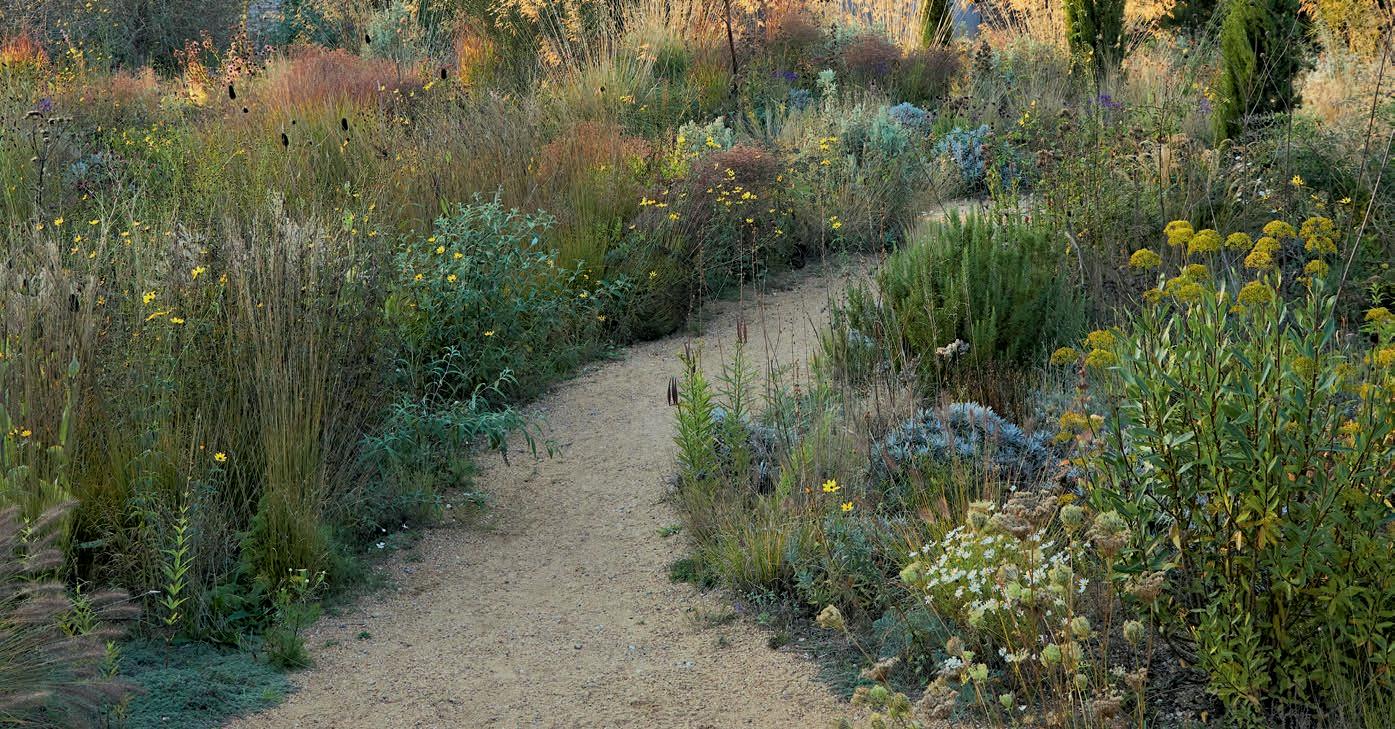














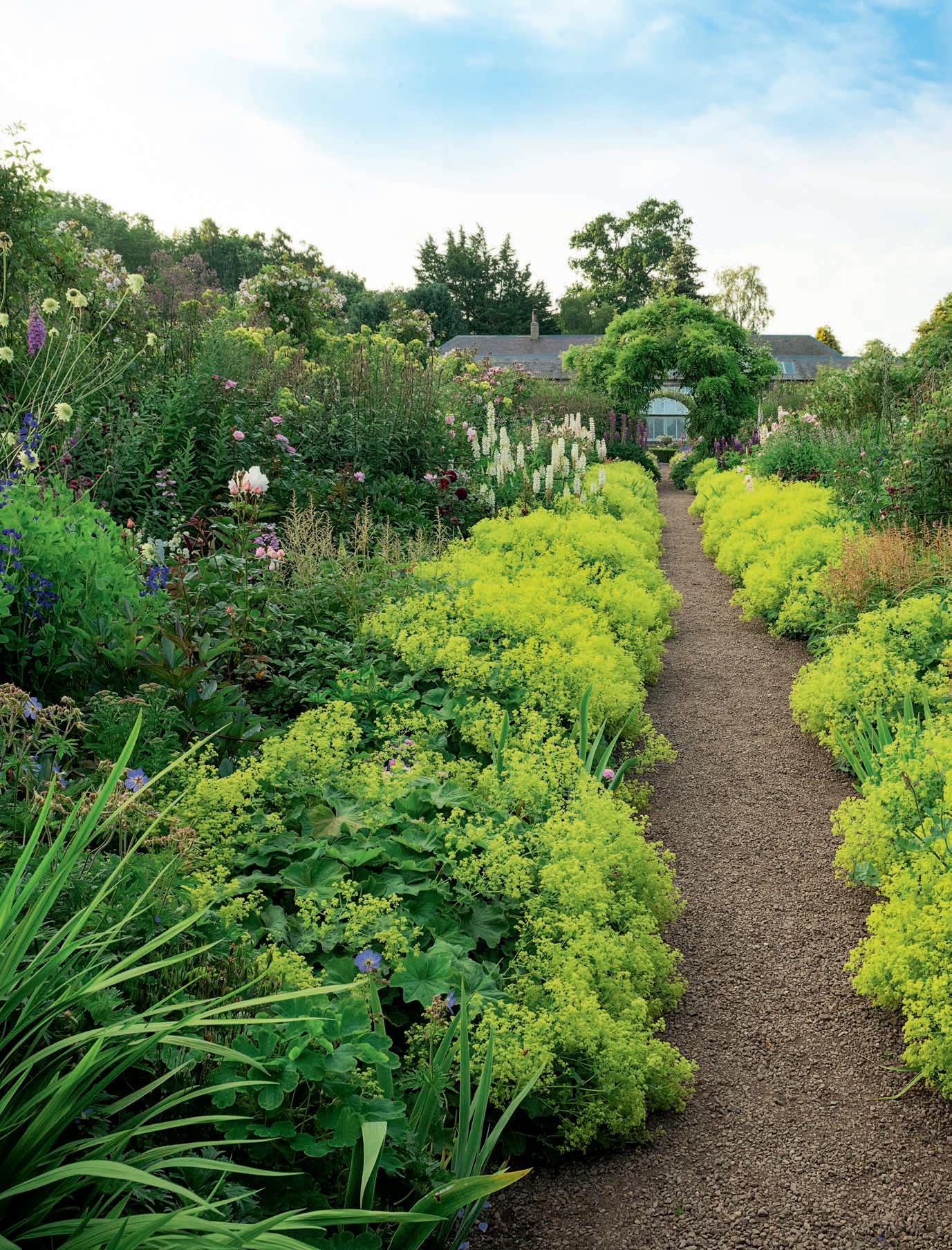





































































In the embrace of elliptical walls is the most painterly array of roses, grown to perfection by Rose Foyle at Carolside in the Scottish Borders
WORDS & PHOTOGRAPHS ANDREA JONES
Carolside is well known for having a National Collection of pre-1900s gallica roses growing in what is one of Scotland’s finest walled gardens. Its oval shape is unusual, similar to Gravetye Manor’s walled garden in Sussex, designed by William Robinson and completed in 1900. Curiously, Carolside’s walled garden seems to have been built long before the Robinsonian era and has been gardened for over 200 years. It’s not perfectly oval, since the glasshouses cut across one end, but it is a very pretty shape – especially when viewed from upstairs windows of the house.
The garden’s elegantly curved design makes the most of any available light, maximising exposure to the sun for the benefit of the plants sheltered within its walls. Gravetye’s walled garden sits midway down a valley and the shape creates a natural air-drainage system, funnelling cold air into tighter spots of the ellipse where a small outlet allows it to escape, acting as a ‘frost gate’ and subsequently protecting more tender plants during spells of colder weather. It’s not known for sure, but this may explain Carolside’s similar design. What we do know is that enclosed within Carolside’s walls is one of Scotland’s most intensely romantic gardens.
The 1740 Georgian house at Carolside is thought to have been modelled on a design of Chesterfield House in Mayfair, London by the architect Isaac Ware with wings added in the Regency period. For over 800 years, Carolside has been home to many notable Scottish families, with some enthusiastic gardeners among them. Lady Mary Gilmour, a daughter of the Duke of Abercorn lived here and became a notable plantswoman. It was she who devised the initial garden structure and, after World War II, planted the Edwardian rose garden.
The current owner, Rose Foyle, modestly stresses that the overall design of the garden as it is today


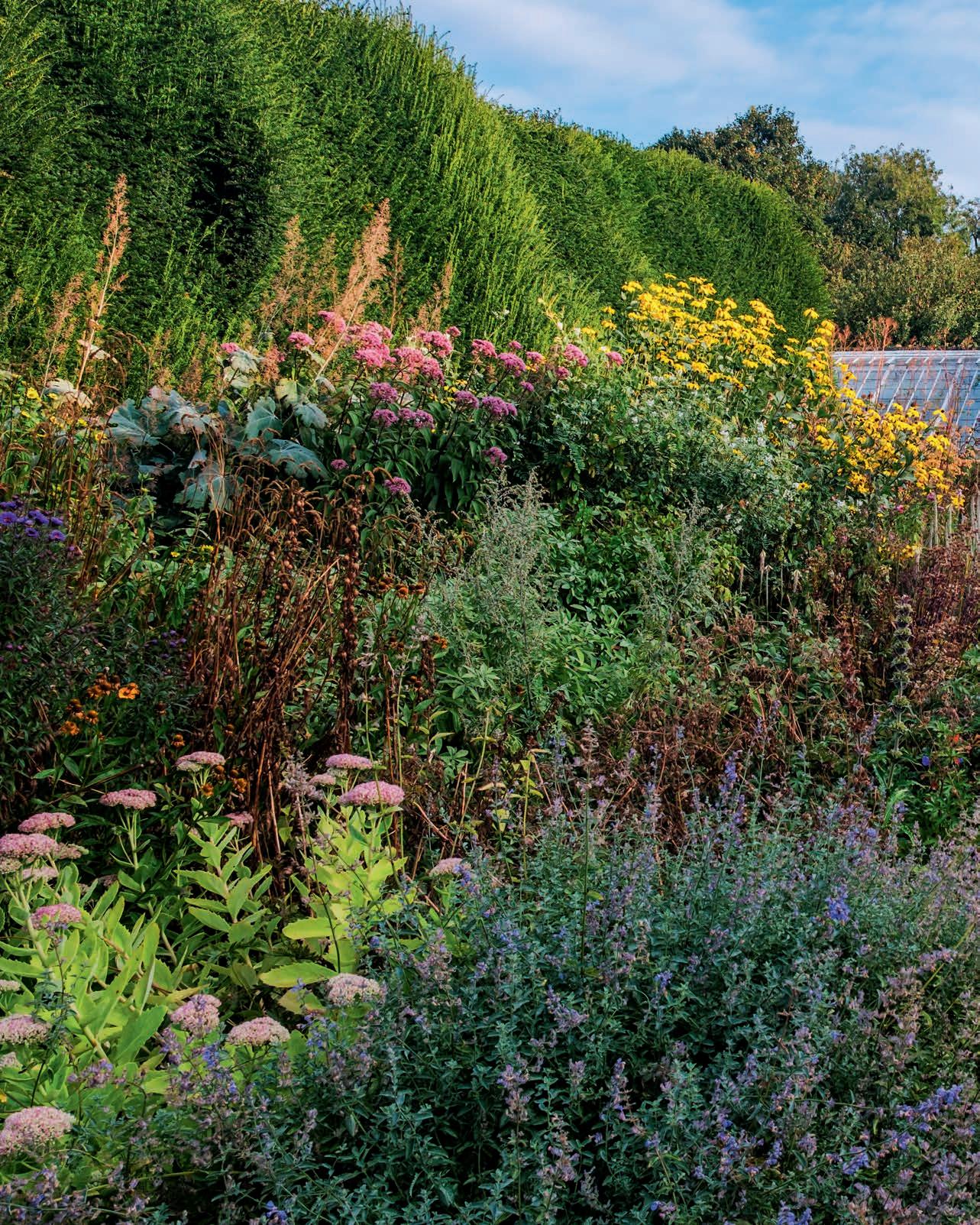
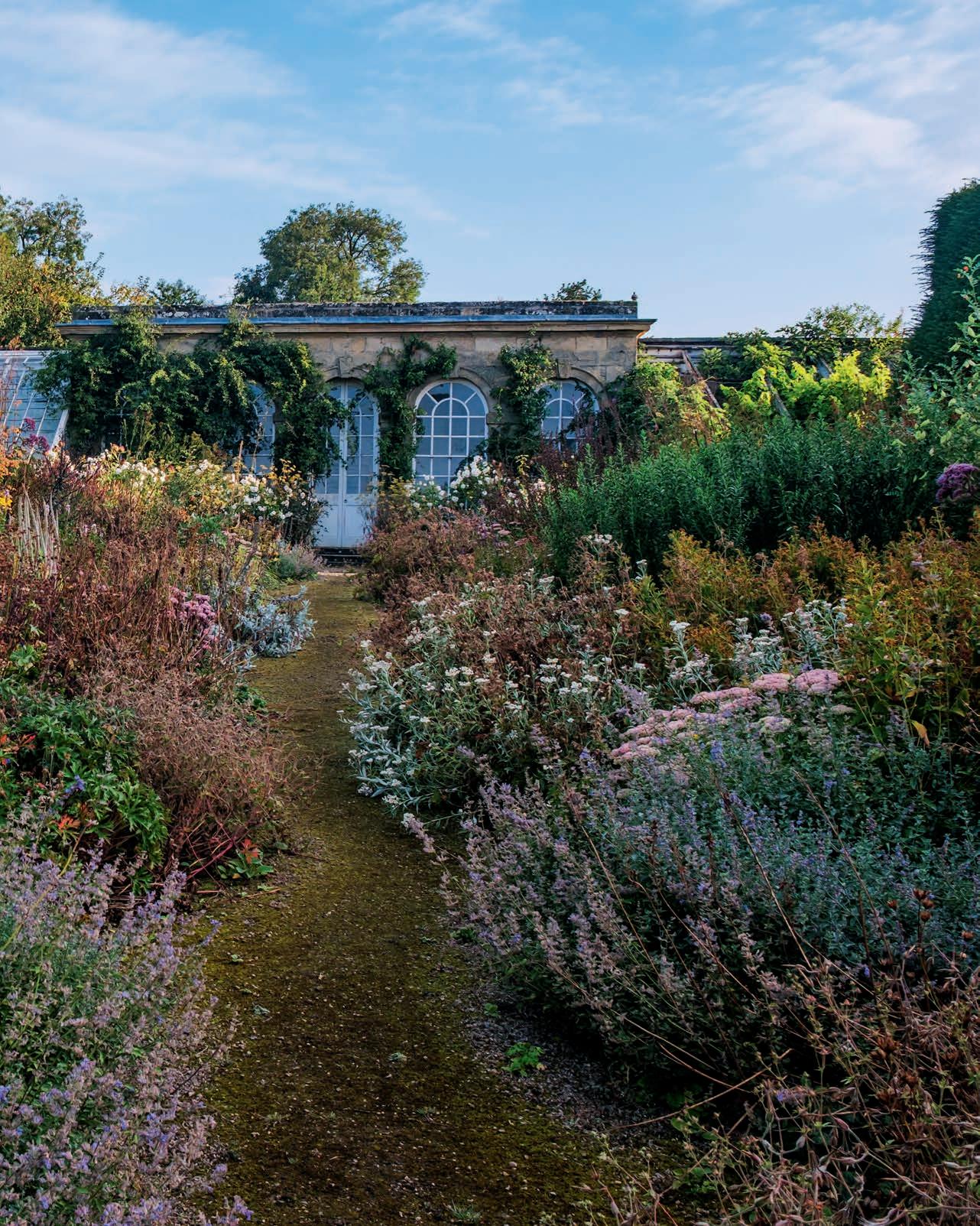
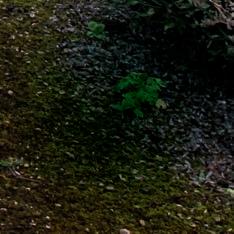

With its deep, abundantly planted borders, the restored walled garden at historic Norton Conyers in North Yorkshire has the sort of unmanicured authenticity that enchants visitors despite its grand scale












Almost 160 years after playing host to Queen Victoria, grand Floors Castle has seen its historic gardens transformed into a living tapestry of colour, wildlife, and wonder, where every path leads to a new delight
WORDS SUSIE WHITE PHOTOGRAPHS RAY COX









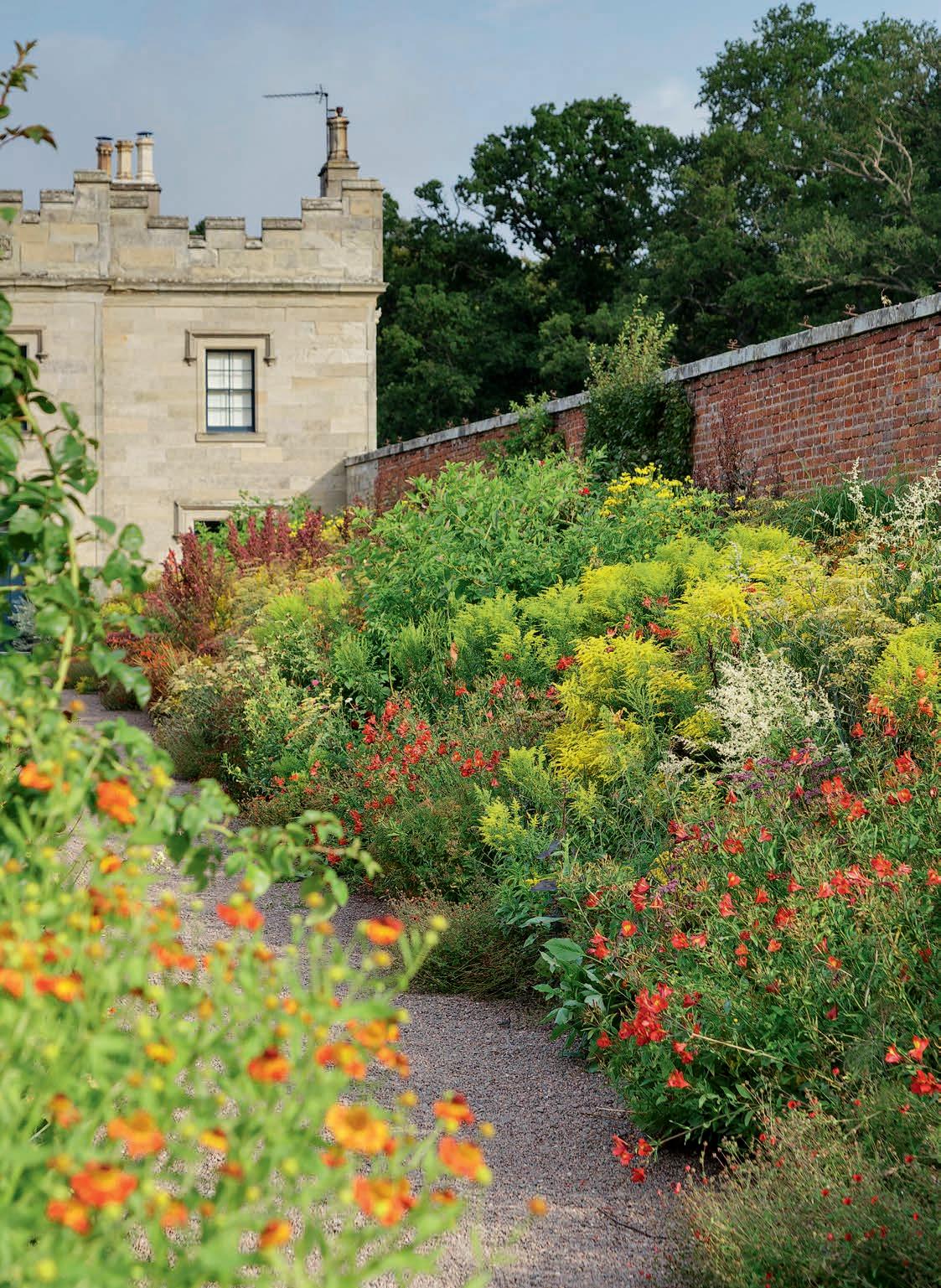
Opposite

From Dartmoor to Japan, these unforgettable destinations left a lasting mark on eight garden designers, who reveal how they helped shape their own creative development

Achange is as good as a rest, so the saying goes. As well as a relaxing break, travelling to a new destination can spark creativity, and if your holiday takes in a lovely garden or a beautiful landscape, it could inspire new ideas for your garden at home. “I believe creativity comes out of a free-wheeling, relaxed brain,” says garden designer Helen ElksSmith. “Sometimes the biggest inspiration is the travel itself and the feeling it gives you – it can release something inside you.” Here, Helen and seven other top garden designers share where they go on holiday, and which gardens and landscapes inspire them most.
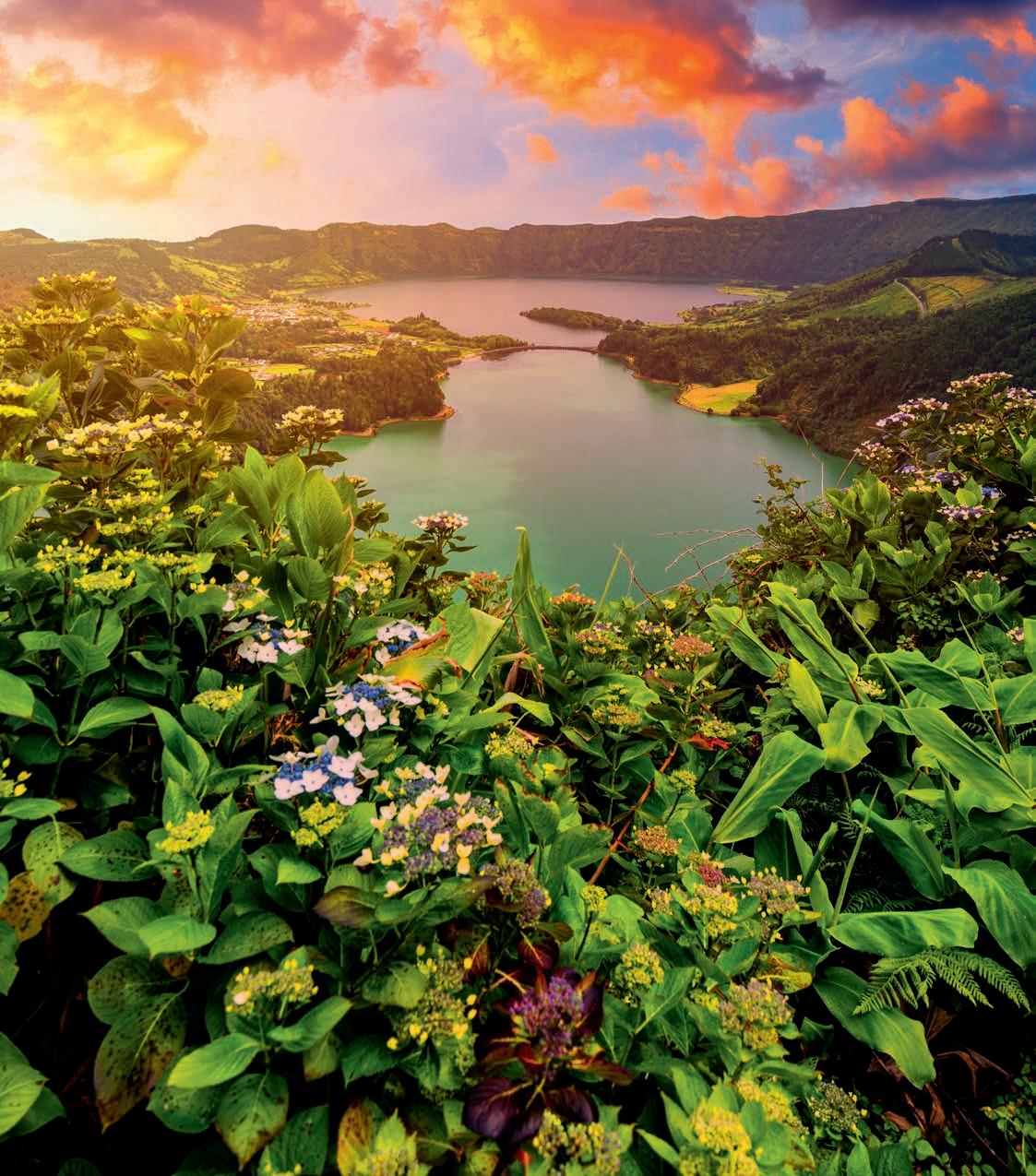





A trip to Japan and the serene landscape of the Hakone Museum of Art has stayed with garden designer and author Andrew Fisher Tomlin.
“My initial visit to this garden was motivated by my longstanding interest in ceramics. I learned of a museum not far from Tokyo that was established to preserve Japan’s heritage ceramics after World War II and to foster an appreciation for the arts as a means of post-war healing,” Andrew explains.
“It has an outstanding collection.”
The museum is located within the landscaped garden of Shinsenkyō. “It’s an artistic achievement designed by Okada Mokichi between 1944 and 1953 amid the remarkable setting of Hakone National Park,” Andrew says.
“Contemporary public landscapes are often seen as immersive, complex environments. Shinsenkyō, on the other hand, o ers a tranquil space that encourages visitors to slow down, reflect, and enjoy a contemplative journey,” he adds. Andrew especially admires its diverse yet restrained planting schemes.
“Bush clover (lespedeza) is managed to cascade over rocks, shedding petals as you walk along the path. Meticulous attention to detail renders Shinsenkyō a timeless landscape and ranks it among one of my favourite gardens,” he says.
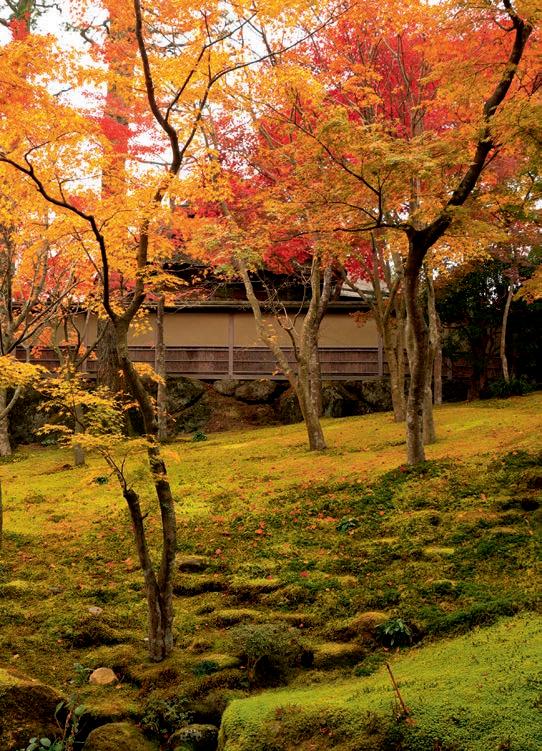
If you are visiting Japan, you could add some of Andrew’s other recommendations to your itinerary.
“Ryoanji Temple is a classic Japanese garden worth visiting,” he says of the Zen temple in western Kyoto with its famous rock garden. He also admires Ginkakuji Temple in Kyoto, with gardens around a Zen temple that dates to 1482.
In Tokyo, Andrew recommends the Hama-rikyu Gardens, a historic public park with seawater ponds that change level with the tides and Ky ū-Furukawa Gardens, a public garden that combines Japanese and Western aesthetics.
Andrew is a director of the London College of Garden Design (lcgd.org.uk) and his new book, The Modern Professional Planting Designer (£35, Rizzoli) is out now.
Matthew Wilson
Three gardens have made a lasting impression on designer and broadcaster Matthew Wilson, but the one that’s had the biggest emotional impact on him, he says, is the incredible Ganna Walska Lotusland, in Santa Barbara, California.
“Ganna Walska was a Polish opera singer who took on a property with a garden that had already been slightly developed, but then proceeded over the course of about 35 years to stamp her quirky nature

























Lying in an archive at a Californian library for decades, incomplete designs by William Morris and his protégé John Henry Dearle have been finessed and released as a collection of printed fabrics and wallpapers



